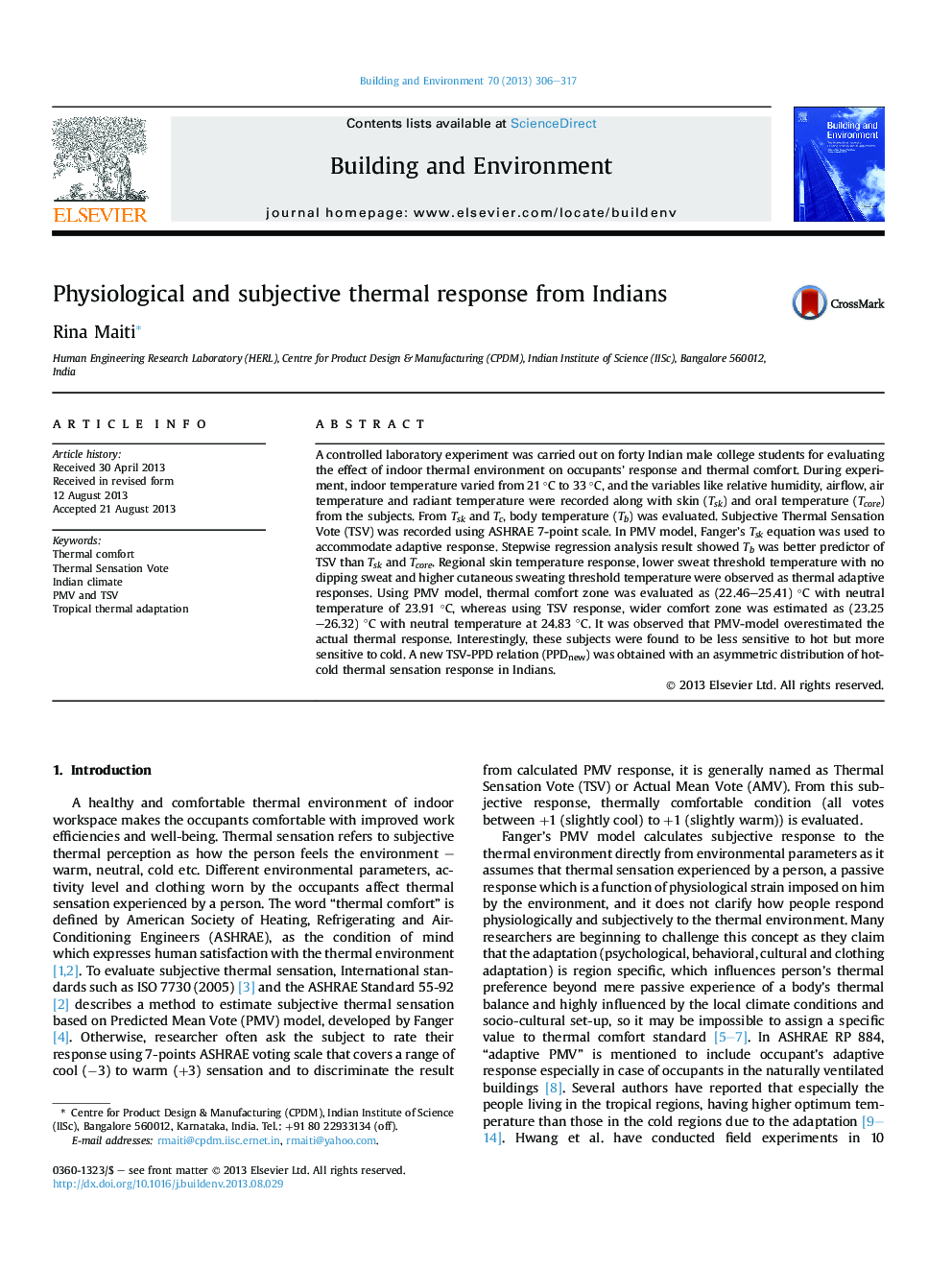| کد مقاله | کد نشریه | سال انتشار | مقاله انگلیسی | نسخه تمام متن |
|---|---|---|---|---|
| 6700884 | 502551 | 2013 | 12 صفحه PDF | دانلود رایگان |
عنوان انگلیسی مقاله ISI
Physiological and subjective thermal response from Indians
ترجمه فارسی عنوان
واکنش فیزیکی و ذهنی حرارتی از سرخپوستان
دانلود مقاله + سفارش ترجمه
دانلود مقاله ISI انگلیسی
رایگان برای ایرانیان
موضوعات مرتبط
مهندسی و علوم پایه
مهندسی انرژی
انرژی های تجدید پذیر، توسعه پایدار و محیط زیست
چکیده انگلیسی
A controlled laboratory experiment was carried out on forty Indian male college students for evaluating the effect of indoor thermal environment on occupants' response and thermal comfort. During experiment, indoor temperature varied from 21 °C to 33 °C, and the variables like relative humidity, airflow, air temperature and radiant temperature were recorded along with skin (Tsk) and oral temperature (Tcore) from the subjects. From Tsk and Tc, body temperature (Tb) was evaluated. Subjective Thermal Sensation Vote (TSV) was recorded using ASHRAE 7-point scale. In PMV model, Fanger's Tsk equation was used to accommodate adaptive response. Stepwise regression analysis result showed Tb was better predictor of TSV than Tsk and Tcore. Regional skin temperature response, lower sweat threshold temperature with no dipping sweat and higher cutaneous sweating threshold temperature were observed as thermal adaptive responses. Using PMV model, thermal comfort zone was evaluated as (22.46-25.41) °C with neutral temperature of 23.91 °C, whereas using TSV response, wider comfort zone was estimated as (23.25-26.32) °C with neutral temperature at 24.83 °C. It was observed that PMV-model overestimated the actual thermal response. Interestingly, these subjects were found to be less sensitive to hot but more sensitive to cold. A new TSV-PPD relation (PPDnew) was obtained with an asymmetric distribution of hot-cold thermal sensation response in Indians.
ناشر
Database: Elsevier - ScienceDirect (ساینس دایرکت)
Journal: Building and Environment - Volume 70, December 2013, Pages 306-317
Journal: Building and Environment - Volume 70, December 2013, Pages 306-317
نویسندگان
Rina Maiti,
